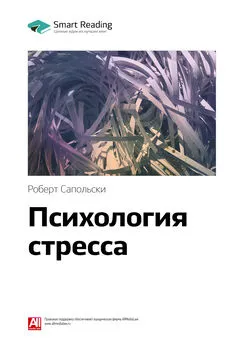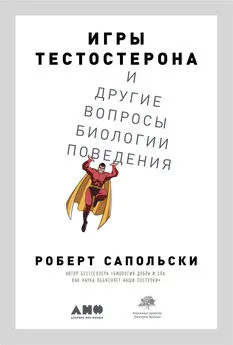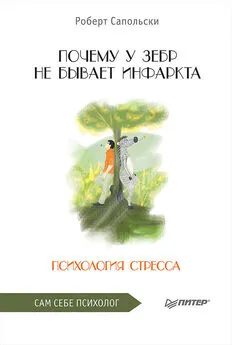Роберт Сапольски - Биология добра и зла. Как наука объясняет наши поступки
- Название:Биология добра и зла. Как наука объясняет наши поступки
- Автор:
- Жанр:
- Издательство:Альпина нон-фикшн
- Год:2019
- Город:Москва
- ISBN:978-5-0013-9051-0
- Рейтинг:
- Избранное:Добавить в избранное
-
Отзывы:
-
Ваша оценка:
Роберт Сапольски - Биология добра и зла. Как наука объясняет наши поступки краткое содержание
Биология добра и зла. Как наука объясняет наши поступки - читать онлайн бесплатно ознакомительный отрывок
Интервал:
Закладка:
459
E. Turkheimer, “Three Laws of Behavior Genetics and What They Mean,” Curr Dir Psych Sci 9 (2000): 160.
460
L. Guiso et al., “Culture, Gender, and Math,” Sci 320 (2008): 1164.
461
R. Fisman and E. Miguel, “Corruption, Norms, and Legal Enforcement: Evidence from Diplomatic Parking Tickets,” J Political Economics 115 (2007): 1020; M. Gelfand et al., “Differences Between Tight and Loose Cultures: A 33-Nation Study,” Sci 332 (2011): 1100; A. Alesina et al., “On the Origins of Gender Roles: Women and the Plough,” Quarterly J Economics 128 (2013): 469.
462
Хорошее обсуждение данной темы см.: A. Norenzayan, “Explaining Human Behavioral Diversity,” Sci 332 (2011): 1041.
463
E. Tylor. Primitive Culture (1871; repr. New York: J. P. Putnam’s Sons, 1920).
464
A. Whitten “Incipient Tradition in Wild Chimpanzees,” Nat 514 (2014): 178; R. O’Malley et al., “The Cultured Chimpanzee: Nonsense or Breakthrough?” J Curr Anthropology 53 (2012): 650; J. Mercador et al., “4, 300-Year-Old Chimpanzee Sites and the Origins of Percussive Stone Technology,” PNAS 104 (2007): 3043; E. van Leeuwenet al., “A Group-Specific Arbitrary Tradition in Chimpanzees ( Pan troglodytes ),” Animal Cog 17 (2014): 1421.
465
J. Mann et al., “Why Do Dolphins Carry Sponges?” PLoS ONE 3 (2008): e3868; M. Krutzen et al., “Cultural Transmission of Tool Use in Bottlenose Dolphins,” PNAS 102 (2005): 8939; M. Möglich and G. Alpert, “Stone Dropping by Conomyrma bicolor (Hymenoptera: Formicidae): A New Technique of Interference Competition,” Behav Ecology and Sociobiology 2 (1979): 105.
466
M. Pagel, “Adapted to Culture,” Nat 482 (2012): 297; C. Kluckhohn et al., Culture: A Critical Review of Concepts and Definitions (Chicago: University of Chicago Press, 1952); C. Geertz, The Interpretation of Cultures (New York: Basic Books, 1973).
467
D. Brown, Human Universals (New York: McGraw- Hill, 1991); D. Smail, On Deep History and the Brain (Oakland: University of California Press, 2008).
468
U.S. Central Intelligence Agency, “Life Expectancy at Birth,” in The World Factbook , https://cia.gov/library/publications/the-world-factbook/rankorder/2102rank.html; W. Lutz and S. Scherbov, Global Age-Specific Literacy Projections Model (GALP): Rationale, Methodology and Software (Montreal: UNESCO Institute for Statistics Adult Education and Literacy Statistics Programme, 2006), www.uis.unesco.org/Library/Documents/GALP2006_en.pdf; U.S. Central Intelligence Agency, “Infant Mortality Rate,” in The World Factbook , https://cia.gov/library/publications/the-world-factbook/rankorder/2091rank.html; International Monetary Fund, World Economic Outlook Database , October 2015.
469
Homicide: United Nations Office on Drugs and Crime, Global Study on Homicide 2013 (April 2014); K. Devries, “The Global Prevalence of Intimate Partner Violence Against Women,” Sci 340 (2013): 1527. Данные об изнасилованиях: NationMaster, “Rape Rate: Countries Compared,” www.nationmaster.com/country-info/stats/Crime/Rape-rate; L. Melhado, “Rates of Sexual Violence are High in Democratic Republic of the Congo,” Int Perspectives on Sexual and Reproductive Health 36 (2010): 210; K. Johnson et al., “Association of Sexual Violence and Human Rights Violations with Physical and Mental Health in Territories of the Eastern Democratic Republic of the Congo,” JAMA 304 (2010): 553. Данные об издевательствах: F. Elgar et al., “Income Inequality and School Bullying: Multilevel Study of Adolescents in 37 Countries,” J Adolescent Health 45 (2009): 351.
470
B. Snyder, “The Ten Best Countries for Women,” Fortune , October 27, 2014, http://fortune.com/2014/10/27/best-countries-for-women/. Отчет «Глобальный гендерный разрыв» был впервые опубликован в 2006 г. Всемирным экономическим форумом. Inter-Parliamentary Union, “Women in National Parliaments,” IPU.org, August 1, 2016, www.ipu.org/wmn-e/classif.htm; U.S. Central Intelligence Agency, “Maternal Mortality Rate,” in The World Factbook , https://cia.gov/library/publications/the-world-factbook/rankorder/2223rank.html.
471
Gallup Poll International, “Do You Feel Loved?” February 2013; J. Henrich et al., “The Weirdest People in the World? BBS 33 (2010): 61; M. Morris et al. “Culture, Norms and Obligations: Cross-National Differences in Patterns of Interpersonal Norms and Felt Olibgations Toward Coworkers,” The Practice of Social Influence in Multiple Cultures 84107 (2001).
472
H. Markus and S. Kitayama, “Culture and Self: Implications for Cognition, Emotion, and Motivation,” Psych Rev 98 (1991): 224; S. Kitayama and A. Uskul, “Culture, Mind, and the Brain: Current Evidence and Future Directions,” Ann Rev of Psych 62 (2011): 419; J. Sui and S. Han, “Self-Construal Priming Modulates Neural Substrates of Self-Awareness,” Psych Sci 18 (2007): 861; B. Park et al., “Neural Evidence for Cultural Differences in the Valuation of Positive Facial Expressions,” SCAN 11 (2016): 243.
473
H. Katchadourian, Guilt: The Bite of Conscience (Palo Alto, CA: Stanford General Books, 2011); J. Jacquet, Is Shame Necessary? New Uses for an Old Tool (New York: Pantheon, 2015); B. Cheon et al., “Cultural Influences on Neural Basis of Intergroup Empathy,” Neuroimage 57 (2011): 642; A. Cuddy et al., “Stereotype Content Model Across Cultures: Towards Universal Similarities and Some Differences,” Brit J Soc Psych 48 (2009): 1.
474
R. Nisbett, The Geography of Thought: How Asians and Westerners Think Differently… And Why (New York: Free Press, 2003).
475
T. Hedden et al., “Cultural Influences on Neural Substrates of Attentional Control,” Psych Sci 19 (2008): 12; S. Han and G. Northoff, “Culture-Sensitive Neural Substrates of Human Cognition: A Transcultural Neuroimaging Approach,” Nat Rev Nsci 9 (2008): 646; T. Masuda and R. E. Nisbett, “Attending Holistically vs. Analytically: Comparing the Context Sensitivity of Japanese and Americans,” JPSP 81 (2001): 922.
476
J. Chiao, “Cultural Neuroscience: A Once and Future Discipline,” Prog Brain Res 178 (2009): 287.
477
Nisbett, The Geography of Thought ; Y. Ogihara et al., “Are Common Names Becoming Less Common? The Rise in Uniqueness and Individualism in Japan,” Front Psych 6 (2015): 1490.
478
A. Mesoudi et al., “How Do People Become W.E.I.R.D.? Migration Reveals the Cultural Transmission Mechanisms Underlying Variation in Psychological Processes,” PLoS ONE 11 (2016): e0147162.
479
A. Terrazas and J. Batalova, Frequently Requested Statistics on Immigrants in the United States (Migration Policy Institute, 2009); J. DeParle, “Global Migration: A World Ever More on the Move,” New York Times , June 25, 2010; Pew Research Center, “Second-Generation Americans: A Portrait of the Adult Children of Immigrants,” February 7, 2013, www.pewsocialtrends.org/2013/02/07/second-generation-americans/.
480
J. Lansing, “Balinese ‘Water temples’ and the Management of Irrigation,” Am Anthropology 89 (1987): 326.
481
T. Talhelm et al., “Large-Scale Psychological Differences Within China Explained by Rice Versus Wheat Agriculture,” Sci 344 (2014): 603.
482
A. Uskul et al., “Ecocultural Basis of Cognition: Farmers and Fishermen Are More Holistic than Herders,” PNAS 105 (2008): 8552.
483
Z. Dershowitz, “Jewish Subcultural Patterns and Psychological Differentiation,” Int J Psych 6 (1971): 223.
484
H. Harpending and G. Cochran, “In Our Genes,” PNAS 99 (2002): 10; F. Chang et al., “The World-wide Distribution of Allele Frequencies at the Human Dopamine D4 Receptor Locus,” Hum Genetics 98 (1996): 891; K. Kidd et al., “An Historical Perspective on ‘The World-wide Distribution of Allele Frequencies at the Human Dopamine D4 Receptor Locus,’” Hum Genetics 133 (2014): 431; C. Chen et al., “Population Migration and the Variation of Dopamine D4 Receptor (DRD4) Allele Frequencies Around the Globe,” EHB 20 (1999): 309.
485
C. Ember and M. Ember, “Warfare, Aggression, and Resource Problems: Cross-Cultural Codes,” Behav Sci Res 26 (1992): 169; R. Textor, “Cross Cultural Summary: Human Relations Area Files” (1967); H. People and F. Marlowe, “Subsistence and the Evolution of Religion,” Hum Nat 23 (2012): 253.
486
R. McMahon, Homicide in Pre-famine and Famine Ireland (Liverpool, UK: Liverpool University Press, 2013).
487
R. Nisbett and D. Cohen, Culture of Honor: The Psychology of Violence in the South (Boulder, CO: Westview Press, 1996).
488
W. Borneman, Polk: The Man Who Transformed the Presidency and America (New York: Random House, 2008); B. Wyatt-Brown, Southern Honor: Ethics and Behavior in the Old South (Oxford: Oxford University Press, 1982).
489
F. Stewart, Honor (Chicago: University of Chicago Press, 1994).
490
D. Fischer, Albion’s Seed (Oxford: Oxford University Press, 1989).
491
P. Chesler, “Are Honor Killings Simply Domestic Violence?” Middle East Quarterly , Spring 2009, pp. 61–69, www.meforum.org/2067/are-honor-killings-simply-domestic-violence.
492
M. Borgerhoff Mulder et al., “Intergenerational Wealth Transmission and the Dynamics of Inequality in Small-Scale Societies,” Sci 326 (2009): 682.
493
P. Turchin, War and Peace and War: The Rise and Fall of Empires (NY: Penguin Press, 2006); D. Rogers et al., “The Spread of Inequality,” PLoS ONE 6 (2011): e24683.
494
R. Wilkinson, Mind the Gap: Hierarchies, Health and Human Evolution (London: Weidenfeld and Nicolson, 2000).
495
F. Elgar et al., “Income Inequality, Trust and Homicide in 33 Countries,” Eur J Public Health 21, 241; F. Elgar et al., “Income Inequality and School Bullying: Multilevel Study of Adolescents in 37 Countries,” J Adolescent Health 45 (2009): 351; B. Herrmann et al., “Antisocial Punishment Across Societies,” Sci 319 (2008): 1362.
Читать дальшеИнтервал:
Закладка:

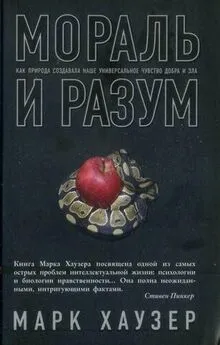
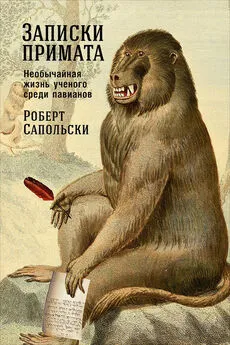


![Роберт Сапольски - Игры тестостерона и другие вопросы биологии поведения [litres]](/books/1074102/robert-sapolski-igry-testosterona-i-drugie-vopros.webp)


